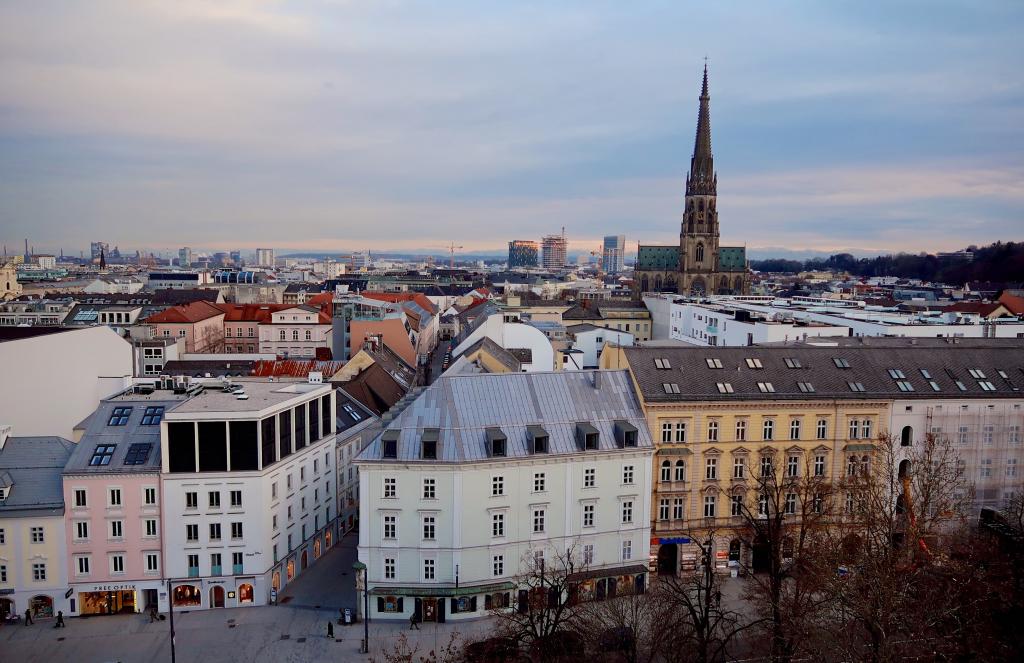Thessaloniki gets ready for its metro launch in November
The underground rapid transit lines have been under construction for almost two decades due to various project delays
 TheMayor.EU logo
TheMayor.EU logo 
When "KlimaStadtLinz2030" is complete, it will weave itself into the city's climate protection policy
The city of Linz is pushing hard to become carbon neutral by 2030
Yesterday, Linz authorities announced “KlimaStadtLinz2030”, a project that will help create a roadmap to climate neutrality by the year 2030. This development comes after the municipality was awarded a contract called “City of the Future” by the Austrian Research Promotion Agency. Though the project will look at residential and transport CO2 pollution sources, industrial emissions will not be part of the carbon reduction framework.
The Federal Ministry for Climate Protection, Environment, Energy, Mobility, Innovation and Technology is throwing its support behind the research project with 100,000 euros. The specific field "KlimaStadtLinz2030" will address is the creation of a CO2 budget for the city, as well as outlining key players in carbon production and reduction.
The propositions that the project outlines will then inform and integrate into the city’s climate policy and help push Linz towards carbon neutrality by the year 2030. This will contribute towards local government's goal of taking part in the European Union’s mission of “100 climate-neutral cities by 2030 – for and with the citizens”.
The total CO2 count emitted by Linz has to include the industrial emissions, however, the city cannot do anything to reduce them. This is why the project outright excludes them from the framework.
This creates a major disbalance in the city’s efforts towards climate neutrality, as only a third of the total emissions come from the residential, commercial and transport sectors. Just for comparison, Voestalpine (a very large steel manufacturer) accounts for 10% of Austria’s total emissions.
The city currently estimates it produces one megaton of CO2 per year or the equivalent produced by 217 million passenger vehicles for the same period. This is just 80 million cars shy of the total number of vehicles in the European Union.
At the same time, the Linz carbon allowance sits at 13 megatons of CO2, which have to last until the year 2050. This means that local authorities have to take bold action when it comes to carbon reduction, otherwise, the allowance will run out by 2034.
This makes the goals of “KlimatStadtLinz2030” seem very unobtainable.
There is currently no internationally standardised definition of the term ‘carbon-neutral’. The European Union understands it to mean an extensive reduction in greenhouse gases up to the point where the remaining emissions can be offset (net-zero emissions).
The offset could happen through carbon sinks, such as forests or carbon separation, or technological solutions.
Despite the obstacles, city authorities in Linz want to try and reduce CO2 emissions and pave the way to carbon neutrality. According to a press release, Environment Councillor Eva Schobesberger described the climate effects as something both the city and its citizens can feel.
She continued: “Increased heat and drought, hail, heavy rain and storm events are the consequences of the climate crisis that can no longer be averted. We have to prepare for it. At the same time, we have to work with all our might and vigour to make our city climate neutral”.

The underground rapid transit lines have been under construction for almost two decades due to various project delays

Now you can get your wine in Talence by paying directly in Bitcoin

That’s because the state has to spend money on updating the railway infrastructure rather than subsidizing the cost of the popular pass

Rethinking renewable energy sources for the urban landscape

The examples, compiled by Beyond Fossil Fuels, can inform and inspire communities and entrepreneurs that still feel trepidation at the prospect of energy transition

Now you can get your wine in Talence by paying directly in Bitcoin

The 10th European Conference on Sustainable Cities and Towns (ESCT) sets the stage for stronger cooperation between the EU, national and local level to fast track Europe's transition to climate neutrality.

At least, that’s the promise made by the mayor of Paris, Anne Hidalgo

The underground rapid transit lines have been under construction for almost two decades due to various project delays

At least, that’s the promise made by the mayor of Paris, Anne Hidalgo

Hostal de Pinós is located in the geographical centre of the autonomous region

Despite its church-y name, the district has long been known as the hangout spot for the artsy crowds

Urban dwellers across the EU are having a say in making their surroundings friendlier to people and the environment.

Forests in the EU can help green the European construction industry and bolster a continent-wide push for architectural improvements.

Apply by 10 November and do your part for the transformation of European public spaces

An interview with the Mayor of a Polish city that seeks to reinvent itself

An interview with the newly elected ICLEI President and Mayor of Malmö

A conversation with the Mayor of Lisbon about the spirit and dimensions of innovation present in the Portuguese capital














